Written by: Deep Tide TechFlow
In every round of crypto market fluctuations, some familiar names repeatedly appear at the top of the gainers' list.
XRP, XLM, ADA... these projects, which are considered 'futures-less' in the mainstream crypto circle, are still re-establishing their presence in the wave of a new bull market.
They are not newly innovative public chains, nor are they the hotcakes of current narratives, nor do they boast powerful ecosystems or technological breakthroughs. But at some stage in the bull market cycle,
They can always rise against the trend in some inexplicable way, returning to the center of attention, and even breaking new highs like XRP.
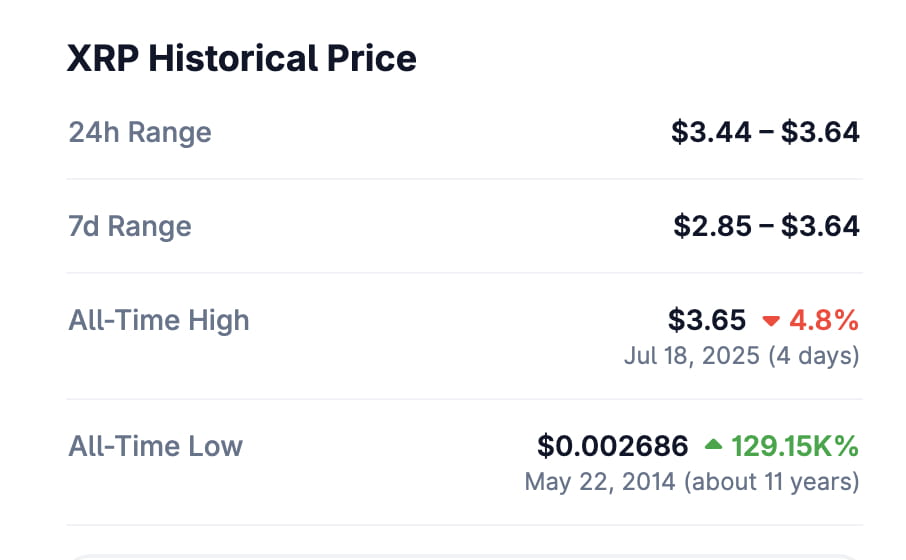
This is not just a 'speculative inertia' in the financial market, but more like a hidden parallel world that exists in the crypto industry.
In this parallel world, XRP is the future of cross-border payments, XLM is the hope for global micropayments, and ADA is the new order of smart contract governance.
Old coins do not die; they must possess something extraordinary.
Crypto Parallel World
If the crypto market is a stage filled with hot rotations and technological innovations, then the survival soil of old coins often exists behind this stage—a parallel world almost separate from the mainstream crypto community.
We are accustomed to discussing new narratives and projects on Twitter, Discord, or Telegram, and WeChat communities, as well as switching between hot topics in the Ethereum, Solana ecosystems, or meme coins.
However, few realize that these so-called 'old coins' have large and stable communities behind them; it's just that their active space is not within the circles we are used to.
XRP, XLM, ADA, HBAR… the users of these old coins have never been active participants in crypto Twitter, nor are they speculators who believe in KOL recommendations to buy coins within the community.
They have their own information channels, community networks, and judgment logic—or, more directly, they do not care what is currently popular in the industry.
The XRP community is active in WhatsApp groups, Line groups, and Facebook communities in Japan, the United States, and even Latin America.
Most of these users are not concerned with the technical logic of crypto, nor do they chase industry hotspots, but they are familiar with XRP's cross-border payment story, recognize Ripple's cooperation model with banks, and may even view XRP as a 'long-term asset for financial innovation.'
Whether it is XRP being sued by the SEC or various voices in the market expressing pessimism, the beliefs of these users are largely unaffected.
The Stellar (XLM) community is the same.
In some developing countries, the cooperation between Stellar and local financial service providers has given it a real user base. They may not know about Staking, DeFi, or even be unaware of the innovative ecosystem on-chain, but Stellar has already become a cutting-edge brand and asset in their awareness.
Cardano (ADA) has a more typical phenomenon of 'die-hard fans'.
In Japan, Africa, Eastern Europe, and some English-speaking countries, Cardano's education, governance, and community projects have accumulated a large number of loyal users. Even in China, there is an ADA community led by programmers from major internet companies.
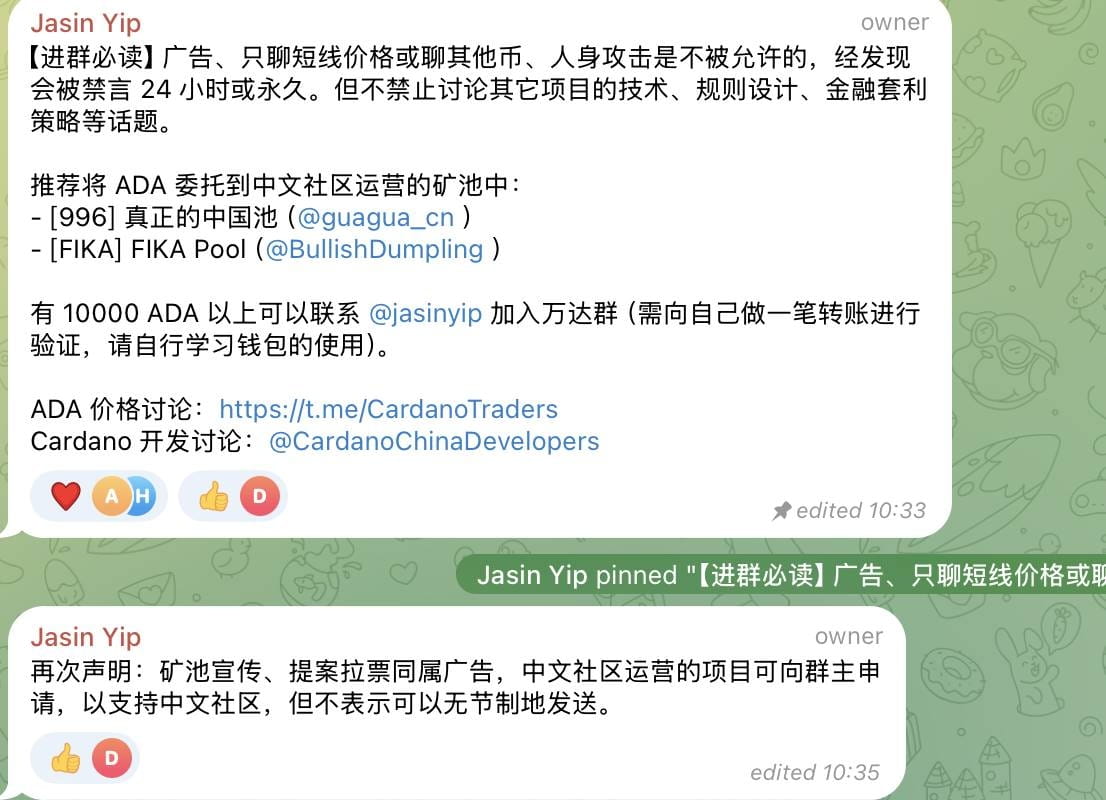
These people are active for years in Reddit, Telegram, and local forums, are very familiar with Cardano's technical roadmap, and founder Charles Hoskinson's speeches; even if the ecosystem develops slowly and there are ongoing industry doubts, they still hold firmly.
These perceptions may seem to have long disconnected from reality in the eyes of outsiders, but they constitute a deeply rooted reason for holding coins.
All of this constitutes an ecology parallel to the mainstream crypto world.
Messari analyst Sam expressed that crypto Twitter always looks down on those 'old coins' because compared to the new technologies used on-chain, these coins have become outdated. Their judgment is not wrong, but ordinary retail investors do not actually understand what modern on-chain technology is; they only buy the coins they are familiar with (such as XRP, ADA, XLM, DOGE).
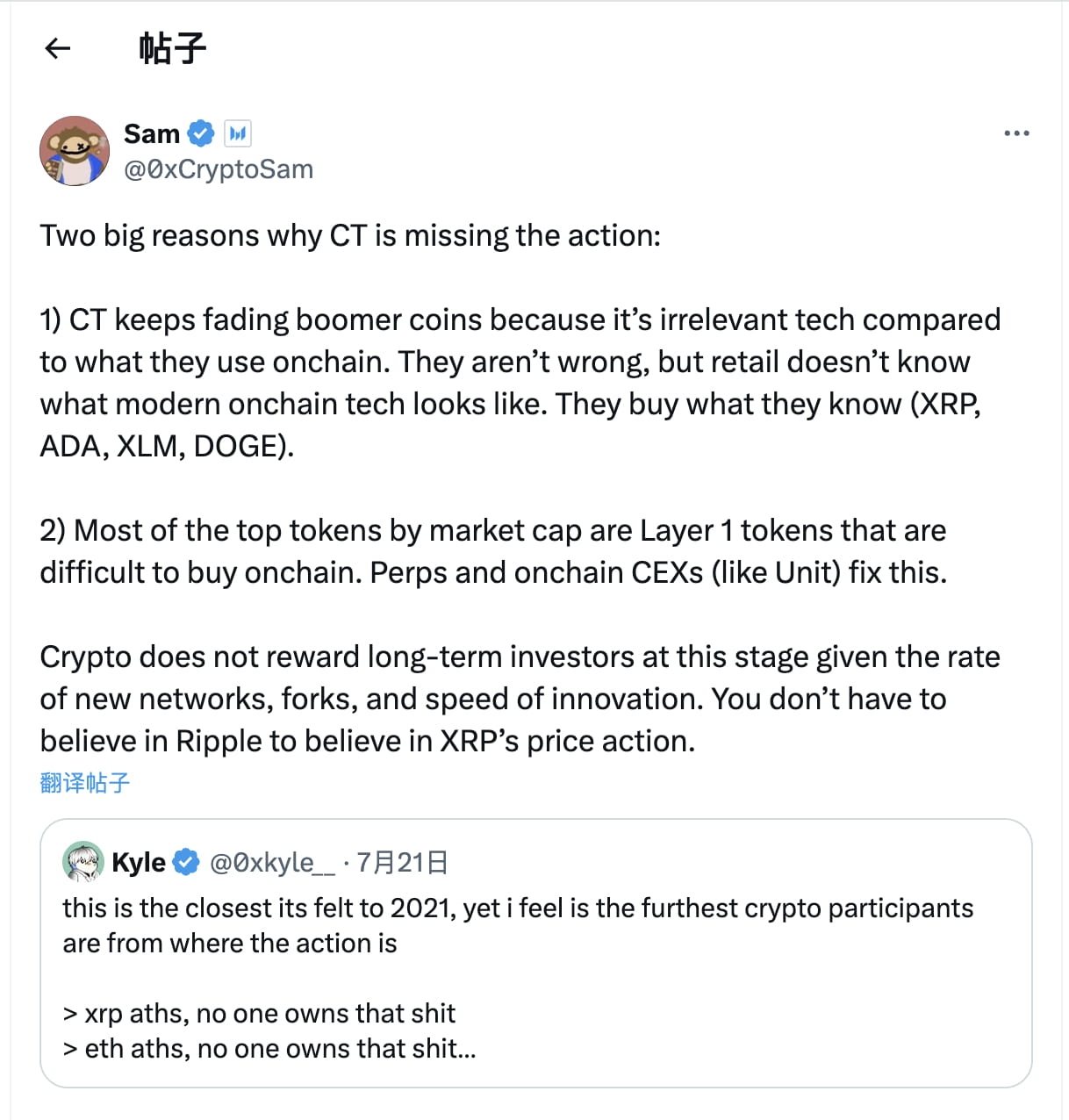
It does not rely on popularity for survival, nor does it rise and fall with market narratives; the community operation logic of these old coins is closer to the user culture of the Web2 era: brand, habits, emotional recognition, and even the psychological inertia of 'having long been accustomed to it.'
The survival of old coins has never relied on the mainstream stage of the industry; their vitality is hidden in the 'secret corners' that the mainstream crypto world often overlooks.
It is precisely for this reason that no exchange will easily delist XRP, XLM, or ADA.
The transaction volume, active users, market depth, and hedging demand they bring are all important components of trading platforms.
Even if the project teams do not have technical breakthroughs, old coins still hold significant positions on the trading lists of spot, leverage, and perpetual contracts.
They have become part of the market, a passive allocation habit of funds, and even the 'old friends' in the minds of speculators—once the market starts, funds will always flow back.
Not just capital, but also politics
In addition to users and communities, the economic and political power of these projects far exceeds outside expectations.
These crypto projects, considered 'outdated,' continue to shine not only because of the presence of old users but also because they have long secured a place in traditional finance and political capital.
Taking XRP as an example, Ripple is not an isolated technology and business organization but a 'veteran player' that has long been involved in traditional finance and policy making.
The Ripple founding team and executives frequently appear on speaking platforms at international payment forums, U.S. Congressional hearings, and fintech summits, and have deep connections with the Trump administration.
In January 2025, Ripple CEO Brad Garlinghouse was invited to a Trump dinner at the Mar-a-Lago resort in Florida and posted a dinner photo on Twitter with the caption 'Strong start to 2025!'
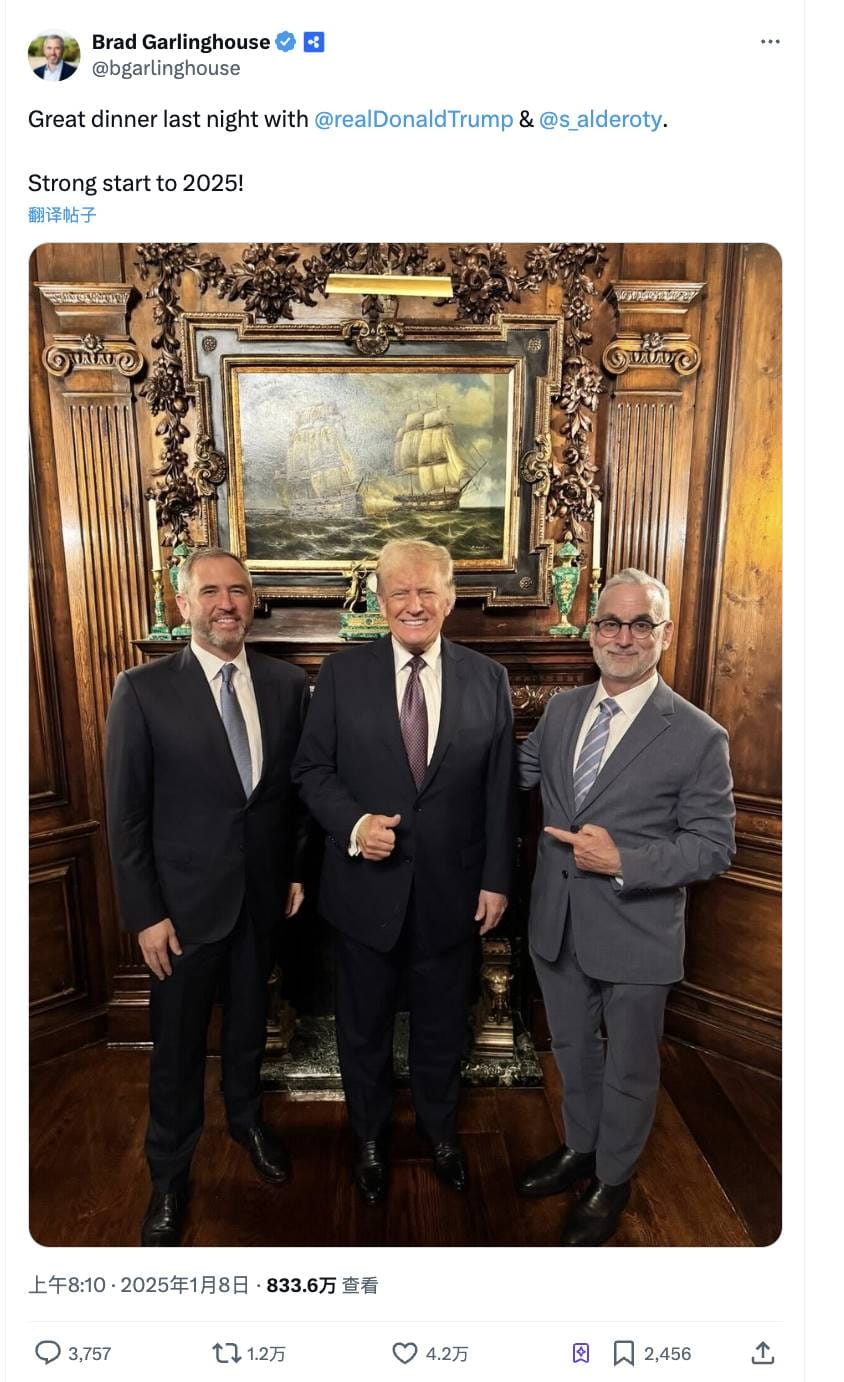
On July 19, Trump officially signed the (Genius Act) at the White House, and Ripple's Chief Legal Officer Stuart Alderoty was invited to the scene, being one of the few witnesses from the cryptocurrency industry.
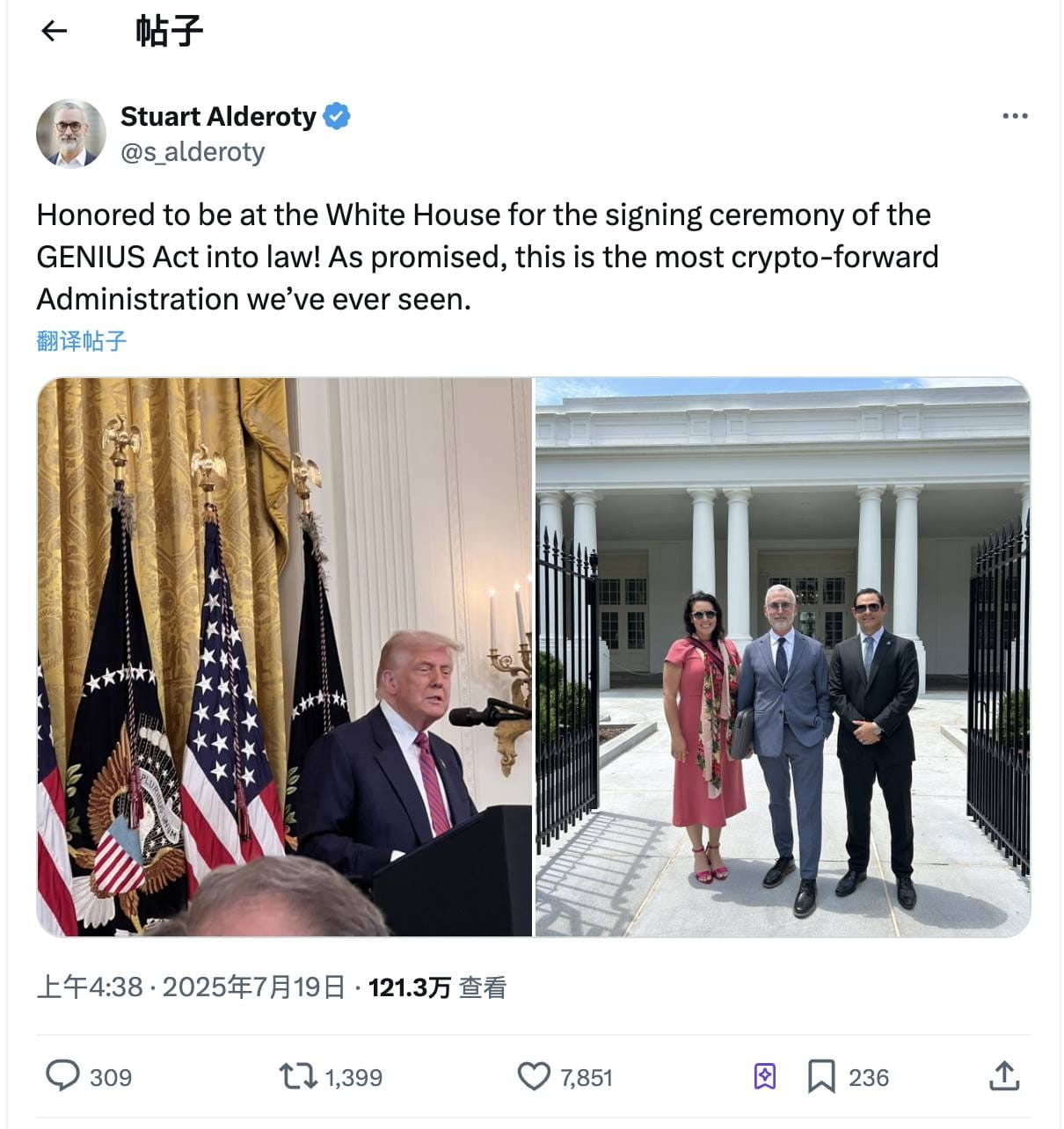
In the long-term lawsuit against Ripple by the SEC, Ripple not only was not crushed but instead achieved favorable results, further solidifying its political position in the discussion of 'compliant crypto assets.'
Moreover, Ripple has collaborated with hundreds of financial institutions worldwide over the years, including traditional financial giants like Santander, PNC, Standard Chartered, and SBI Holdings. This extensive business network has become an important support for XRP's market confidence.
Cardano promotes blockchain education and digital identity projects in countries like Ethiopia and Rwanda, aligning with local national policies and governance.
The Hedera governance council consists of globally renowned companies such as Boeing, Google, IBM, and Deloitte, which have participated multiple times in discussions about digital assets and distributed ledger policies in the United States. Hedera board member Brian Brooks is a former acting director of the U.S. Office of the Comptroller of the Currency and is a close partner of current SEC chairman Paul Atkins.
These projects do not only operate within the crypto circle but are building a solid foundation in the multidimensional space of political systems, compliance consulting, and business cooperation. They have the ability to influence policies, seek regulatory compromises, and gain 'chosen' status through political and capital networks.
Therefore, when people question these old coins from the perspective of technology and narratives, they often overlook the moats that they have long established at the policy and capital levels.
Within this framework, what these old coins represent is not technological backwardness, but rather a different strategy of 'living long and living steadily'—the true trump card lies in capital, business resources, and political shields.
So, when you next see XRP, XLM, ADA, HBAR, etc. on the market leaderboard again, don't be surprised, and there's no need to rush to explain with technology and narratives.
They do not need to be recognized; they just need to survive, and that is enough.
Sometimes, just 'living long enough' can already be an underestimated competitive advantage.



